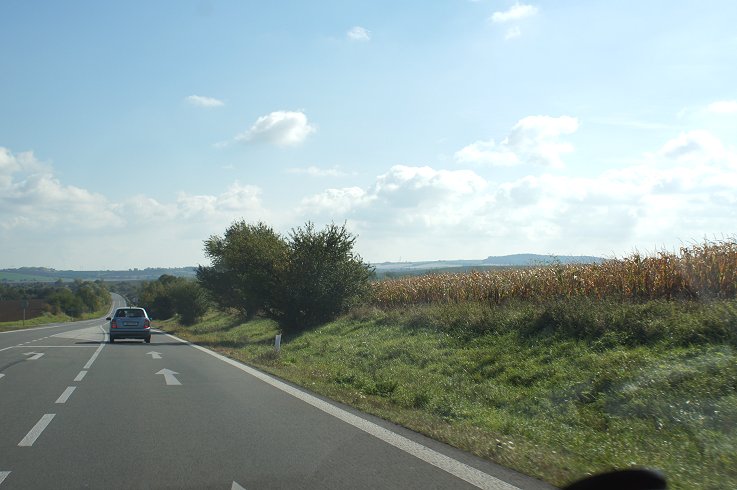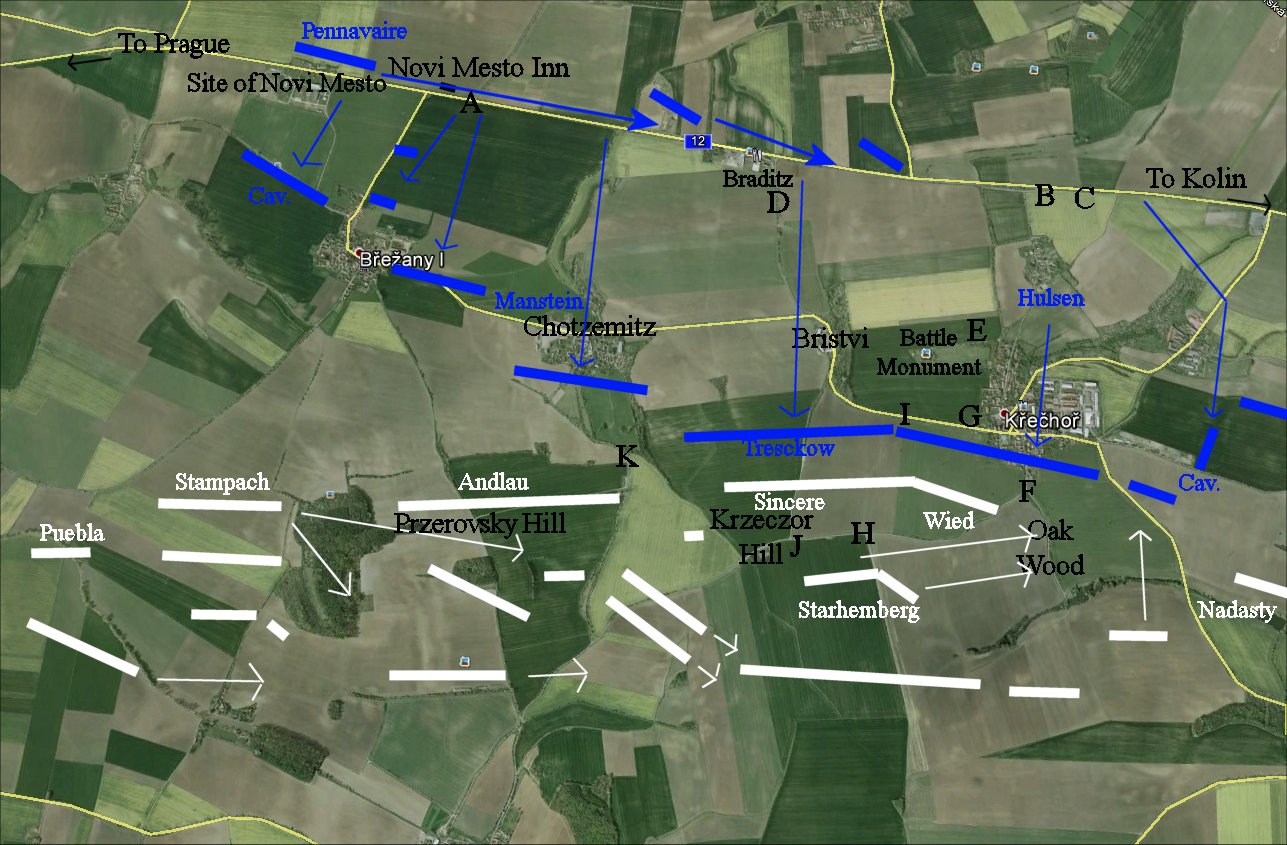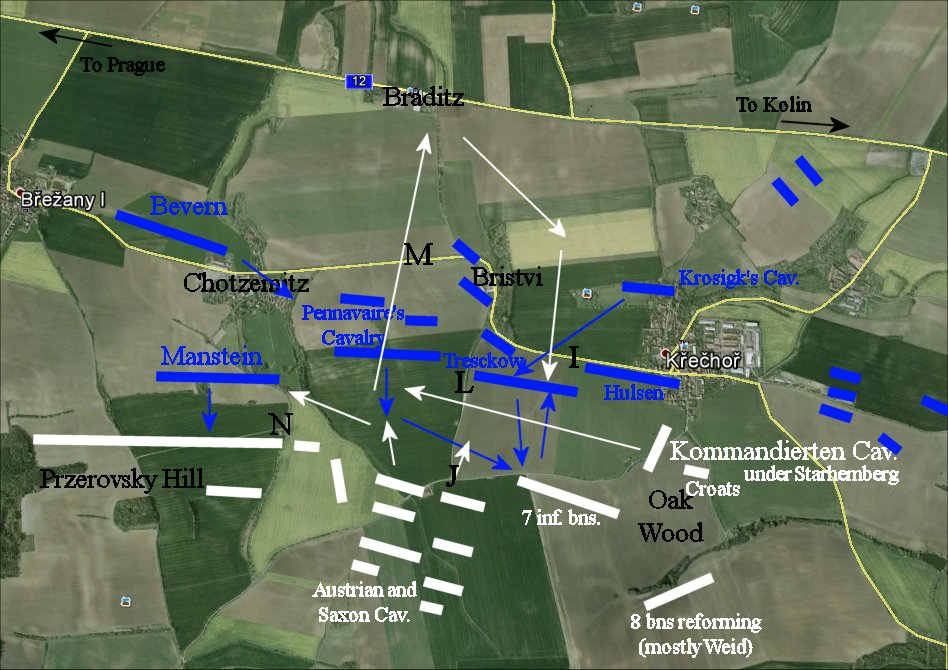Frederick could see that the Austrian position was on gentle slopes with a good fields of fire overlooking a creek.
Rather than attacking this position directly, Frederick
approaching along this road, then called the Kaiserstrasse, crossing the creek to move around the Austrian
right flank. Once across the creek, Frederick would deploy and
attack the Austrian right flank en echelon, starting with the lead
brigade followed by the next brigade, which reinforced the success of the
first - followed by the next, and so forth. It was
to be an oblique attack of the kind that he would make
famous.
Beginning the move on the afternoon of June 17th, Frederick's men were
visible to the Austrians on higher ground. Seeing the threat, at
7pm Daun started to shift his men, leaving Wied's division facing east
while the rest of the army faced north by 5am on June 18th. |

Kaiserstrasse Looking West Across the Beczvarka Valley Toward the Austrian Position |



















